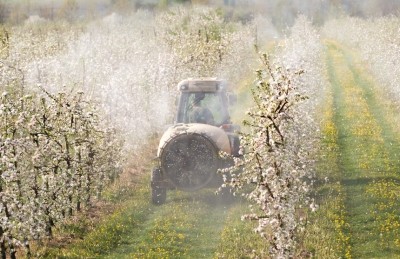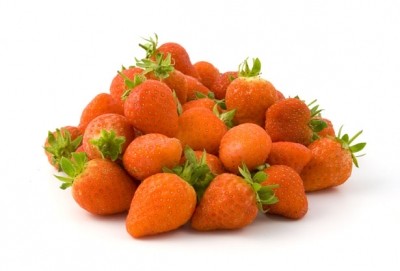How much pesticide residue is in our food?

EFSA tested 78,390 samples of over 750 food products for about 800 different pesticides in 2012 in EU member states, Norway and Iceland (referred to as ‘the reporting countries’). The results showed that 54.9% contained no traceable residues at all.
The scientific body said: “Samples originating from third countries were found to have a significantly higher MRL [Maximum Residue Levels] exceedance rate compared to food produced in the EU and EEA countries (7.5% of the samples produced in third countries exceeded the legal limit compared to 1.4% of the surveillance samples with EU and EEA provenance).”
In its consumer risk assessment, EFSA concluded that the pesticide residue concentrations measured were not likely to pose a long-term dietary risk for European consumers, however in 280 cases negative health outcomes "could not be fully excluded" if the products containing the highest residue concentrations were consumed in high quantities.
Anti-pesticide group Pesticide Action Network (PAN) said to say results of 98.3% compliance was positive would be “spin”.
Broccoli, cauliflower and grapes flagged
The food groups with the highest frequency of exceedance were broccoli (2.8% of the samples exceeded the MRL), cauliflower (2.2%), table grapes (1.8%), peppers (1.4%), aubergines (1.0%), bananas (0.7%) and wheat (0.7%).
Multiple pesticide residues were found most often in bananas (61.2% of samples), table grapes (59.6%) and sweet peppers (21.5%).
Pesticide/product combinations above MRLs
Tthiabendazole/bananas 53.5%
Imazalil/bananas 48.6%
Chlormequat/wheat 39.6%
Fenhexamid/table grapes 26.6%
The tests revealed that residue detection and MRL exceedances for baby food, for which 1,659 samples were gathered, was significantly lower compared to other foods.
Organically produced foods and products from animal origin also came back with some of the lowest levels. No detectable residues were found in 85.1% of the 4,576 organic products, while for non-organic samples this stood at 53.1%.
Stopped at the border
Looking at the higher rate of MRL exceedance in food originating from countries outside the EU and the European Economic Area (EEA), EFSA found this was highest for Malaysia, which exceeded the limits in 38.2% of the 102 samples analysed.
This was followed by Laos (34.6% of 26 samples), Cambodia (26.5% of 68), Vietnam (24.6 % of 179), Kenya (20.6% of 286), India (19.8% of 698) and China (18.7% of 1788).
The products that most frequently exceeded these legal limits within this group were basil, okra, grapefruit and celery leaves.
EFSA said all these foods were subject to an increased level of official controls before being allowed into the EU, according to Regulation (EC) No 669/2009.
“Overall, 9.8% of the samples taken under this programme exceeded the legal limits and were therefore rejected at the border.”
Bravo, you can read a label
Most frequently detected pesticides by absolute number of detections: imazalil (629 detections), thiabendazole (581), chlorpyrifos (469) and azoxystrobin (466).
Discussing the report, Nick Mole, policy officer for PAN UK, told FoodNavigator: “The fact is that nearly 50% of the food tested in the EU has the residues of one or more pesticides in them. This is simply not acceptable. By stating that only a small fraction were found to be over the MRL is frankly distracting from the issue here.
“The MRL is not a safety standard but merely ensures that a particular pesticide has been used in accordance with the instructions on the label.”
EFSA said compared to similar tests conducted in 2009, no “notable variations” in the frequency of products exceeding MRLs were found.
Mole said this meant there was no cause for celebration. “A real celebration would be if there was a significant reduction in the level of residues being found, but that is not the case and it seems that reducing residue levels is simply not a priority for member states or the EU as a whole.”















